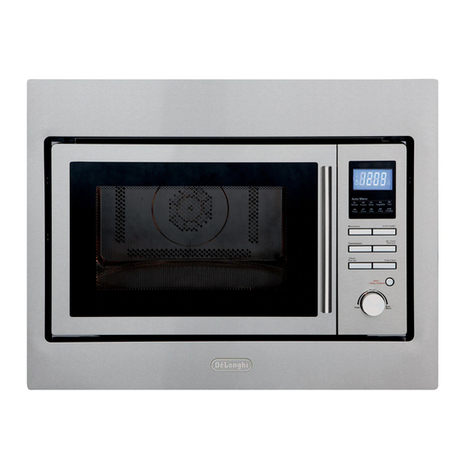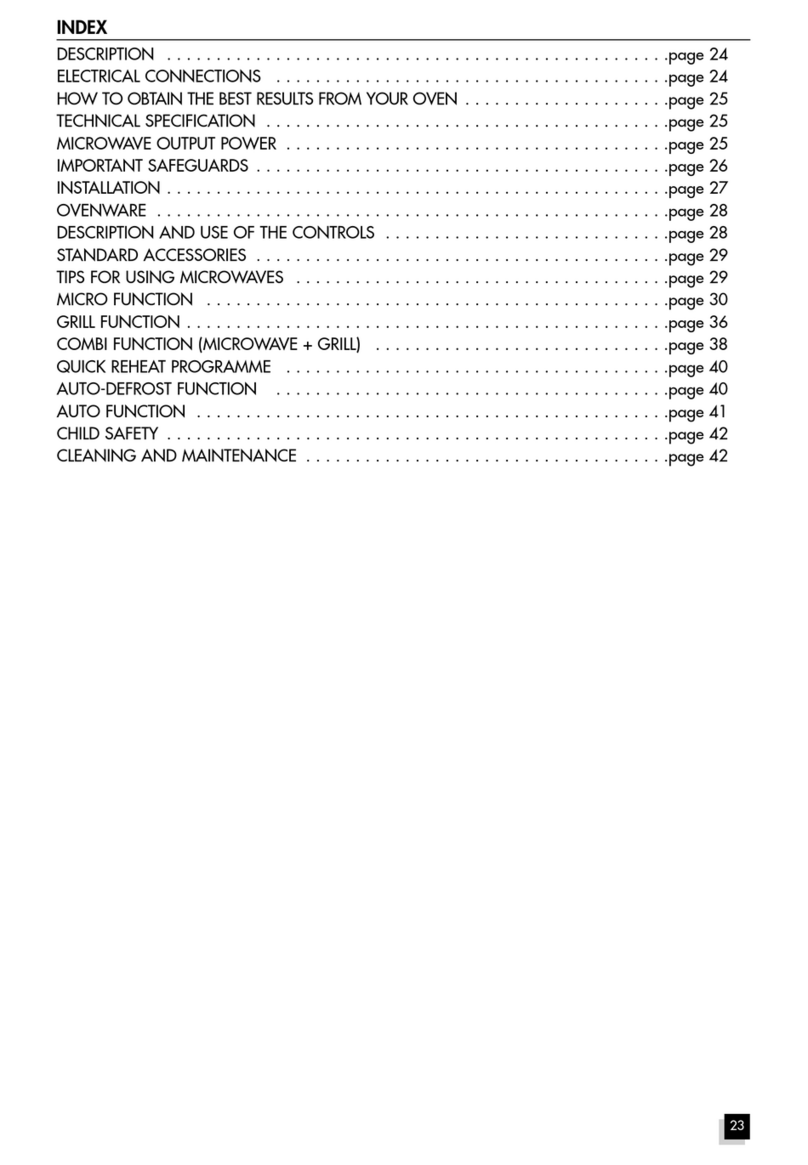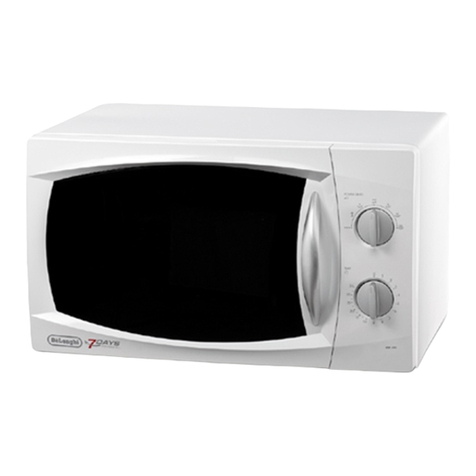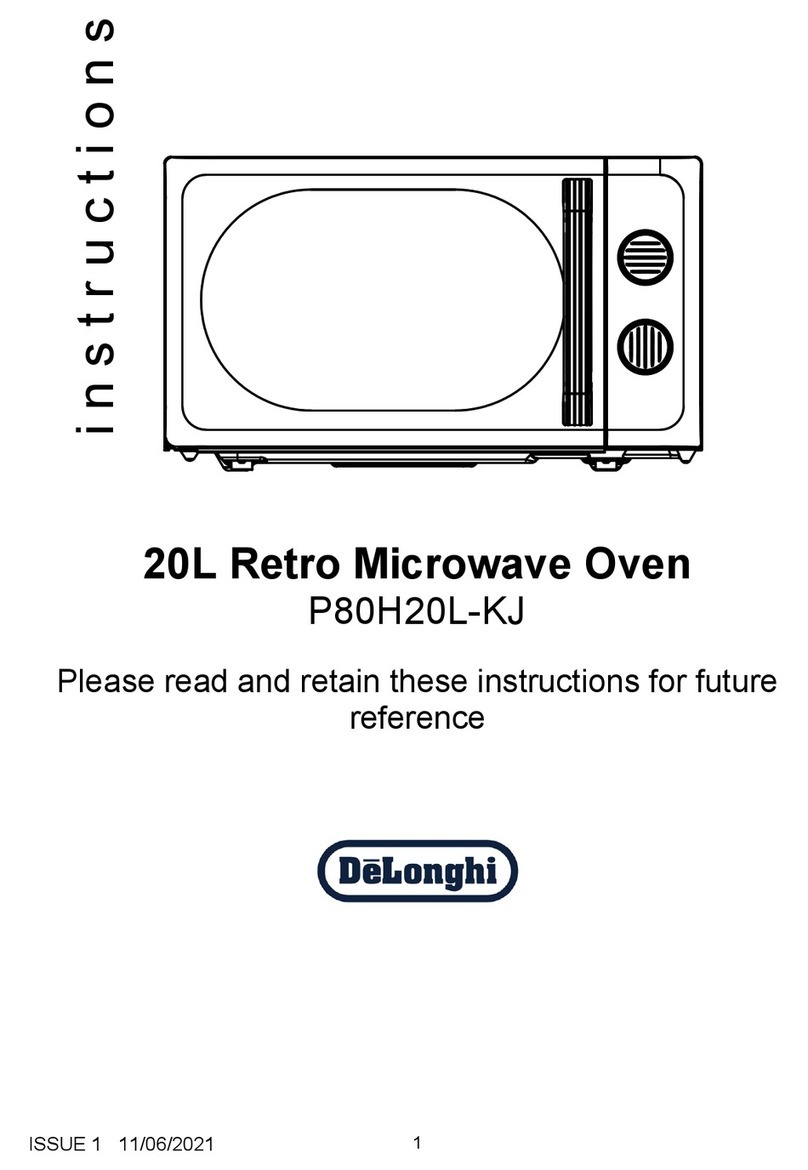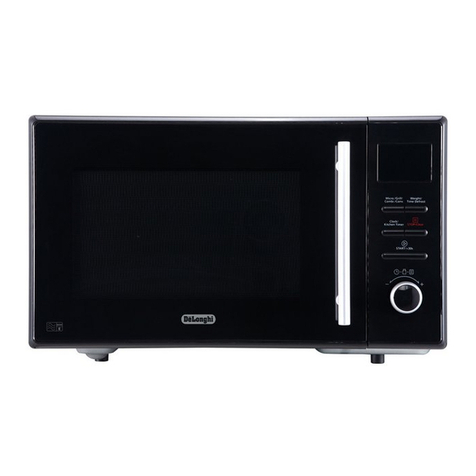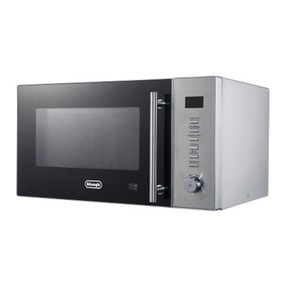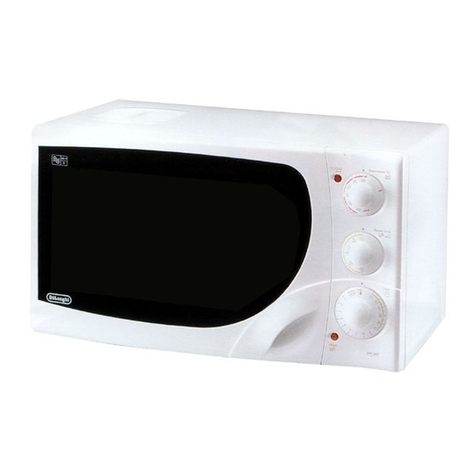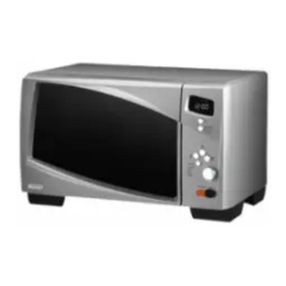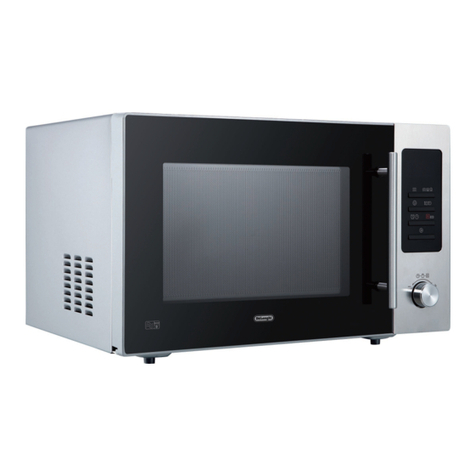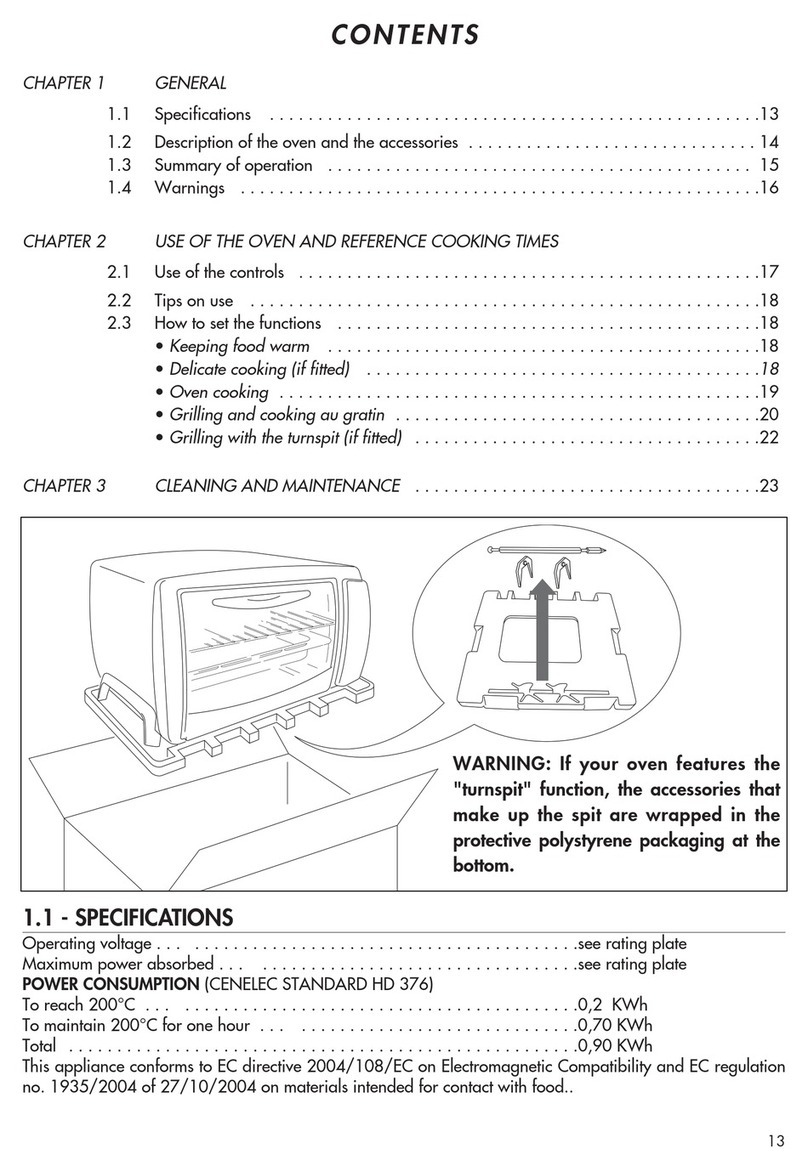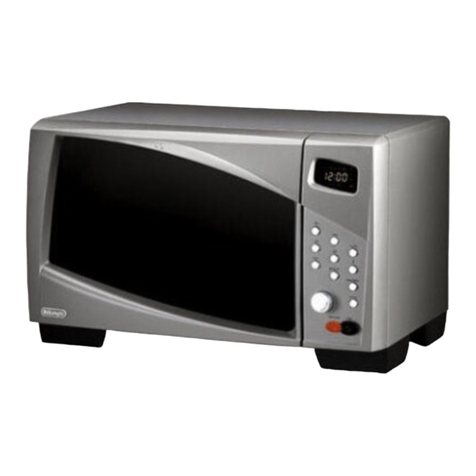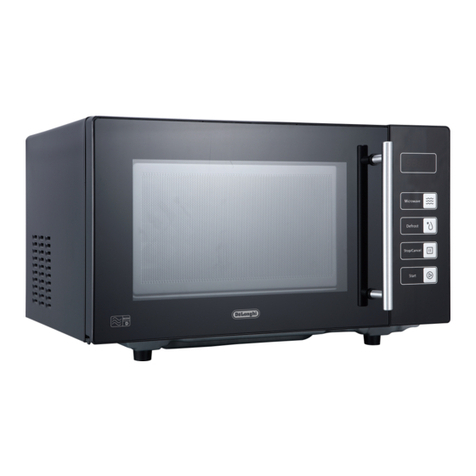29
MODEL WITH A 23-LITRE CAVITY
Outer measurements (LxDxH) 520x305x400
Inner measurements (LxDxH) 322x218x331
Approximate weight 17 kg.
Turntable diameter 31 cm
Oven light 25 W
MODEL WITH A 17-LITRE CAVITY
Outer measurements (LxDxH) 480x272x360
Inner measurements (LxDxH) 285x197x290
Approximate weight 16 kg.
Turntable diameter 27,5 cm
Oven light 25 W
TECHNICAL DATA
BOTH MODELS
For additional data, consult the serial plate glued to the back of the equipment.
This equipment is in compliance with EEC Directives 89/336 and 92/31 related to Electromagnetic Compatibility.
Connect this equipment only to electrical outlets
having a capacity of at least 10A. Before using
this oven, check to make certain that the electri-
cal network is the same as that indicated on the
equipment’s data plate and that the electrical
outlet is connected to an efficient grounding
(earth) terminal. The manufacturer shall not be
responsible in any manner whatsoever for
harm or damage caused by failure to observe
this norm.
ELECTRICAL CONNECTIONS
You can make use of all types of containers
made of glass (preferably Pyrex), ceramics,
porcelain and glazed pottery as long as they do
not have decorations or metal parts (gilded
borders, handles, feet). Heat resistant plastic
containers can also be used, but only for
“Microwave Only” cooking. If you are still
doubtful about using a particular container, you
can perform a simple test. Place the empty
container in the oven for 30 seconds at
maximum power (“Microwave Only” function).
If the container is still cold or only slightly warm,
it is suitable for microwave cooking.
If it is very hot or gives out sparks, it is not
suitable.
For short heating periods, you may use paper
napkins, cardboard trays and plastic
“throwaway” plates as a base.
As far as shape and size are concerned, it is
absolutely essential that containers be such as to
allow the turntable to rotate.
In order to use large-size rectangular containers
(which may not be able to rotate inside the
cooking cavity), you can remove the spindle (B)
from its housing to prevent the turntable (D)
moving. Bear in mind that to be assured of good
results when carrying this out you must stir the
food and turn the container around several
times during the cooking process. Containers
made of metal, wood, recycled kitchen paper,
cane and plate glass are not suitable for use in
microwave ovens. The metal rack supplied with
your microwave have been fully tested for safe
use. You should remember, too, that since
microwaves heat the food and not the
glassware, earthenware or similar containers
for that food, it is possible to cook such foods in
the serving dish and thereby avoid the problem
of having to clean pans later.
However, remember that heat may be trans-
ferred from the food itself to the plate, making it
necessary to use an oven glove.
In any case, observe the guidelines shown in the
following table:
OVENWARE TO BE USED
Plastic for
micro-
waves
YES
YES
YES
Paper
cups*
YES
YES
NO
Paper
plates*
YES
YES
NO
Parch-
ment
paper*
YES
YES
NO
Card-
board
YES
YES
NO
Metal
contain-
ers
NO
NO
NO
Glass-
ware with
metal
parts
NO
NO
NO
Special
roasting
paper
YES
YES
YES
Defrosting
Heating
Cooking
Clay
plates
YES
YES
YES
Porce-
lain
YES
YES
YES
Cera-
mics
YES
YES
YES
Glass
YES
YES
YES
*If the cooking time required is too long, there is a possibility of fire.
•Electrical Connection for UK only . . . . .see page 46

